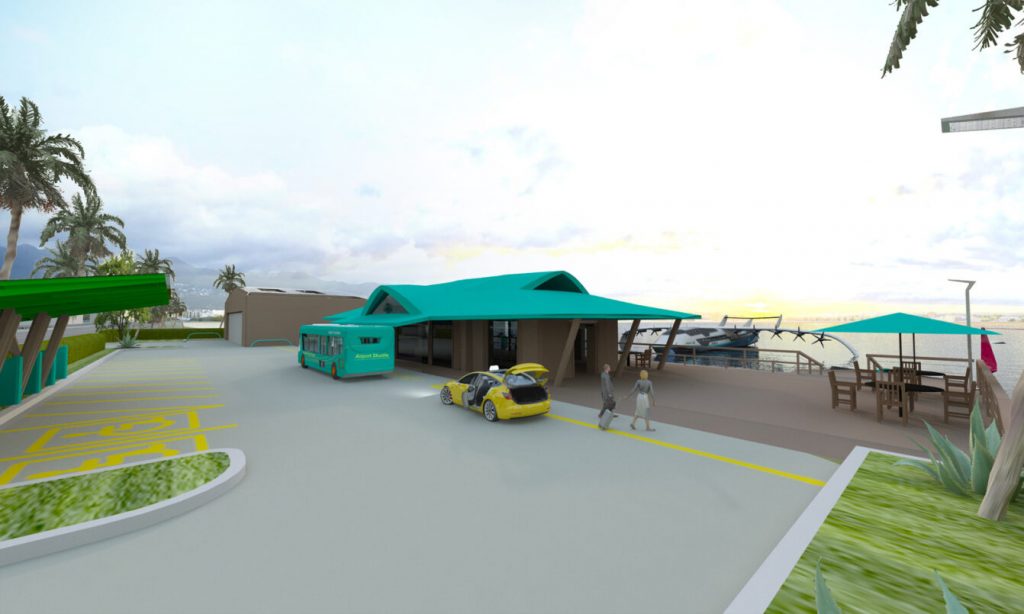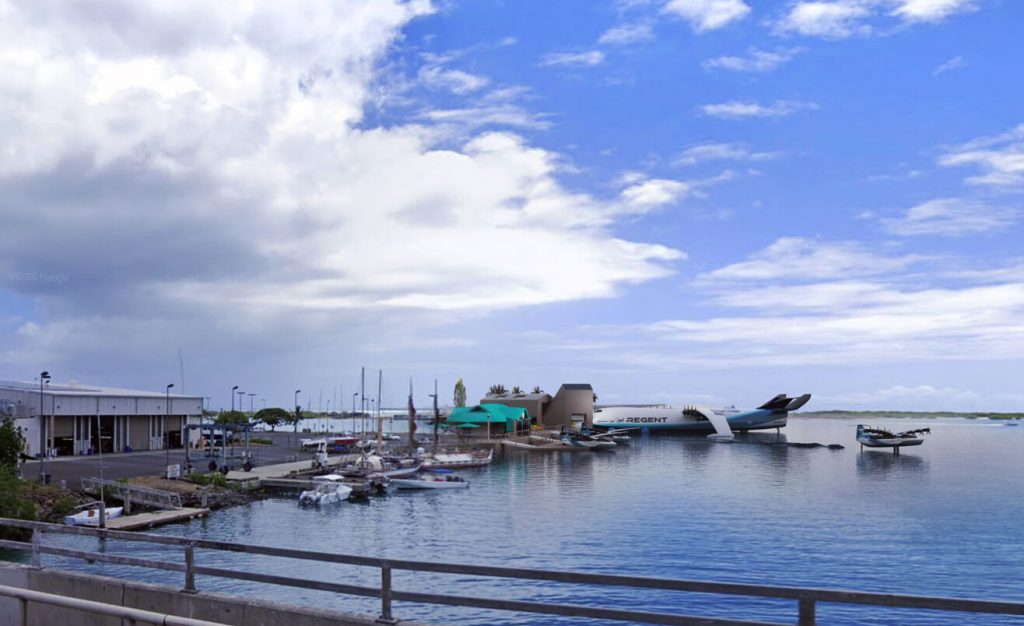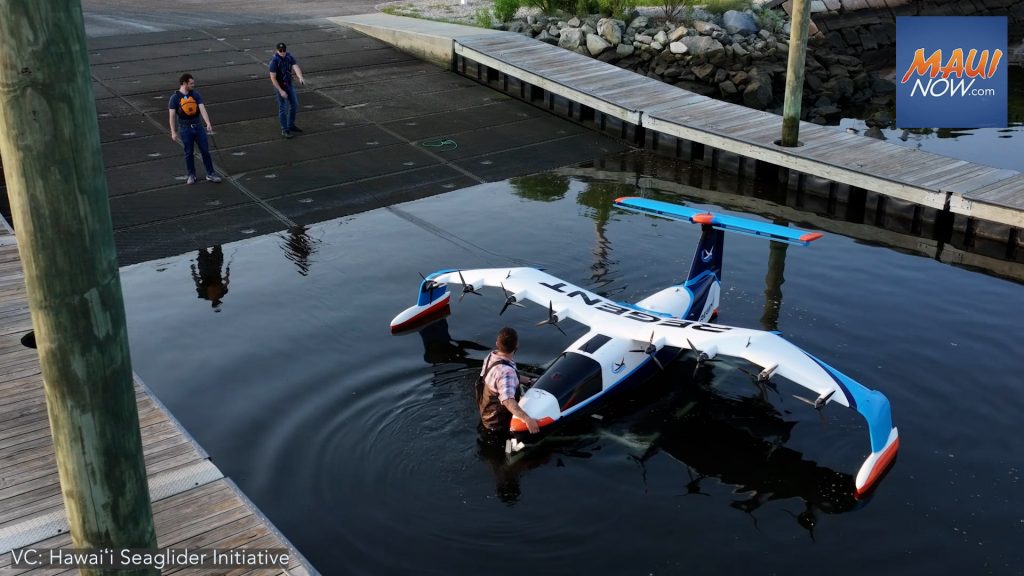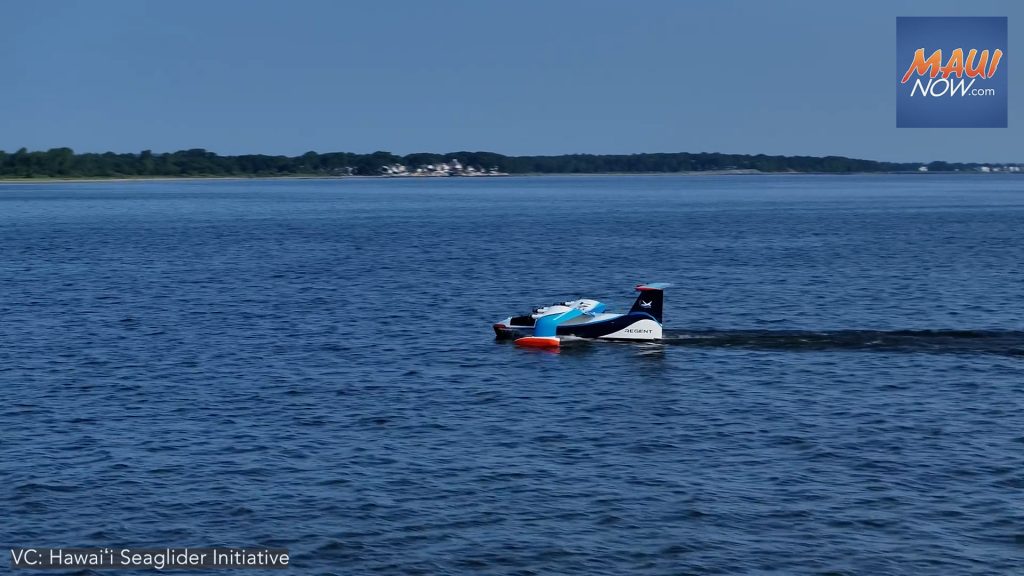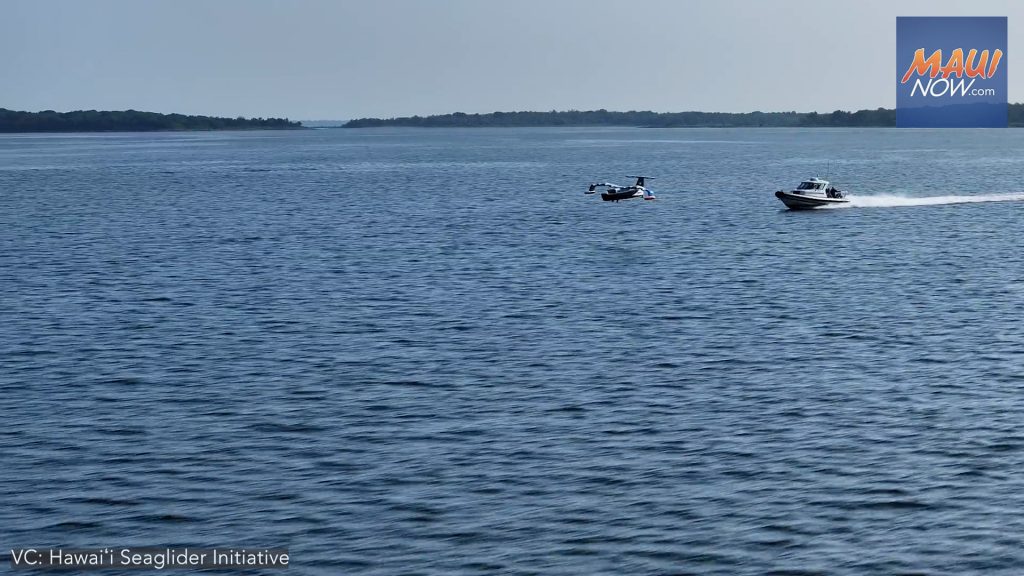Hawaiʻi Seaglider Initiative hopes to provide low cost, accessible kamaʻāina transportation
The Hawaiʻi Seaglider Initiative launched with a broad coalition committed to delivering a new affordable and accessible transportation option to Hawaiʻi communities.
Mokulele Airlines expects to accept delivery of a fleet of 12-passenger Viceroy all-electric seagliders manufactured by REGENT Craft by the middle of the decade.
A route feasibility study estimates a one-way seaglider ticket from Oʻahu to Maui or Oʻahu to Kauaʻi could cost $30, facilitating improved access to healthcare and employment opportunities.
“I commend the Hawai‘i Seaglider Initiative partners from the private, public and community sectors for working together to explore sustainable transportation technology that is in line with our climate change and clean energy strategies,” said Governor Josh Green, M.D. “This investment in our interisland transportation network will provide a renewable transportation alternative that will help keep our communities connected, support our local businesses and build a resilient economy for Hawai‘i.”
Seagliders are all-electric, zero-emission vessels that would operate exclusively over water at speeds up to 180mph, drastically reducing the time and cost of transporting people and freight between coastal communities. Seagliders operate by floating on a hull before transitioning to wave-tolerant underwater hydrofoils and ultimately taking flight at ultra-low altitudes, 30 to 60 feet above the water’s surface.
“We eagerly anticipate the transformative possibilities that seagliders bring to enhancing the well-being of individuals throughout Hawaiʻi, particularly our Molokaʻi community. By offering an affordable and sustainable means of transportation, seagliders aim to facilitate improved access to healthcare and employment opportunities,” said Kūhiō Lewis, CEO of The Council for Native Hawaiian Advancement and an advisor to HSI. “CNHA is excited to collaborate with HSI to ensure that the introduction of seagliders positively impacts and uplifts Native Hawaiians and communities across Hawaiʻi.”
At launch, HSI members comprise more than a dozen prominent corporate and community organizations, including: AES Hawaiʻi, Alaska Airlines, CNHA, Hawaiʻi Agricultural Foundation, Hawaiian Airlines, Hawaii Building & Constructions Trades Council, Hawaiʻi Lodging and Tourism Association, IBEW Local 1186, Japan Airlines, Makaha Cultural Learning Center, Maui Hotel & Lodging Association, Mokulele Airlines, Molokaʻi Chamber of Commerce, Pacific Current, Polynesian Adventure, Pulama Lanaʻi, REGENT Craft, Retail Merchants of Hawaiʻi, United Airlines, and Young Brothers.
HSI has also signed a memorandum of understanding with the Hawai‘i Department of Transportation. HDOT is supportive of alternative forms of interisland transportation using renewable energy for passenger and freight services. The initiative will collaborate with HDOT and engage with other state and local government agencies to support the state’s 2045 decarbonization goals.
“The Hawai‘i Department of Transportation is proud to collaborate with the Hawai‘i Seaglider Initiative as part of the state’s long-term efforts to build resilience into our transportation systems,” said Hawai‘i Department of Transportation Director Ed Sniffen. “Seaglider technology has strong potential to provide an efficient, affordable, and renewable alternative form of interisland transportation for both passengers and freight. This memorandum of understanding will provide the framework for government, private and community stakeholders to work together in a thoughtful and coordinated approach to address the many environmental, cultural, economic, and technical components associated with integrating seaglider technology into our transportation network and infrastructure.”
Seaglider Roll Out in Hawaiʻi
In 2024, HSI will continue to develop the socioeconomic and technical feasibility of establishing an inter-island and intra-island seaglider network in Hawaiʻi. Through discussion groups and community engagement, members will focus on readying Hawaiʻi’s renewable energy and harbor infrastructure; addressing climate and environmental concerns to strengthen Hawaiʻi’s disaster preparedness and resiliency; training the next generation of high-paid skilled workers to support Hawaiʻi’s economy; and ensuring that local communities receive equitable access to and benefits from a seaglider network.
Mokulele Airlines expects to be the first operator of seagliders anywhere in the world, having previously announced plans to accept delivery of a fleet of 12-passenger Viceroy all-electric seagliders manufactured by REGENT Craft by the middle of the decade.
Seaglider Benefits
Seagliders have substantially lower operating costs and simpler infrastructure requirements, making seagliders complementary to current interisland transportation options. Seagliders can be utilized to fill a variety of Hawaiʻi’s transportation needs, including:
- Affordable Kamaʻāina Transportation: Because seagliders operate over water, they can more affordably connect rural communities to medical care, jobs, and other important services. A route feasibility study estimates a one-way seaglider ticket from Oʻahu to Maui or Oʻahu to Kauaʻi could cost $30.
- Lower Costs for Transporting Essential Goods: Seagliders can also be outfitted to transport cargo, including food and other essential goods between islands. Bringing down transportation and supply chain costs will help bring down the price of goods, increasing the purchasing power of Hawaiʻi residents.
Support for HSI
“AES Hawaiʻi is proud to partner with HSI to accelerate sustainable and affordable transportation for our communities,” said Sandra Larsen, president of AES Hawaiʻi. “As a renewable power provider with projects on four islands, we support the advancement of an all-electric, interisland transportation system that will benefit residents and businesses.”
“The Hawai‘i Seaglider Initiative marks a groundbreaking step in our shared kuleana (responsibility) towards environmental stewardship and minimizing climate impact,” said Diana Birkett Rakow, senior vice president of public affairs and sustainability, Alaska Airlines. “This transformative project, leveraging innovative all-electric seaglider technology, aligns with Hawai‘i’s sustainability goals while offering significant economic and community benefits for local residents. Alaska Airlines is proud to support this initiative, bolstering our joint commitment to forging a more sustainable and resilient future in transportation.”
“We’re excited to collaborate with members of the Hawai‘i Seaglider Initiative to explore the many benefits affordable transportation can bring to our local communities and industries,” shared Denise Yamaguchi, founder and CEO of the Hawai‘i Agricultural Foundation. “An affordable shipping option that can connect farmers and producers of locally sourced products with consumers across the islands not only nourishes our communities, but also cultivates a sustainable economy and advances the local agricultural industry.”
“The Hawaiʻi Seaglider Initiative is a gamechanger for both kamaʻāina and visitor travel,” stated Mufi Hannemann, president and CEO of the Hawaiʻi Lodging & Tourism Association. “This innovative development enhances our tourism product and provides a whole new dimension that feeds into our state’s multimodal transportation system.”
“As an early investor and design partner for REGENT’s 100-person seaglider, and as a company that has connected the islands for 94 years with reliable air service, we look forward to lending our expertise to this community effort and learning more about the technology and its potential to make interisland transportation more sustainable,” said Avi Mannis, executive vice president and chief marketing officer, Hawaiian Airlines.
“Maui Hotel and Lodging Association is honored to be an advisor to HSI and discuss how we can provide more efficient ways to transport people and goods in an environmentally friendly way for all of Maui County,” said Lisa H. Paulson, executive director, Maui Hotel and Lodging Association.
“For 30 years, Mokulele has connected the airports of Hawai‘i,” said Keith Sisson, Chief of Staff, Mokulele Airlines. “Being the launch customer of the seaglider allows us the opportunity to introduce a new way of connecting the islands, separate of airport hassles. This will be transformative and will position Mokulele as the multi-modal choice for inter-island travel going forward.”
“HSI brings together local, national, and international partners—including some of the top minds in transportation—to deliver affordable and accessible seaglider technology to Hawaiʻi residents by the middle of this decade,” said Billy Thalheimer, co-founder and CEO, REGENT Craft. “We are excited to be part of this group and to work together to meet the unique needs of Hawaiʻi residents.”





